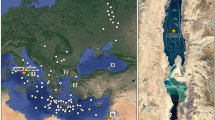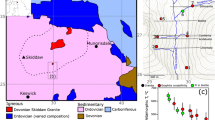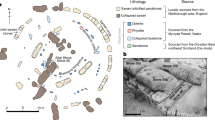Abstract
IN NATURE, vol. xxxii. p. 436, R. Edmonds associates Stonehenge with the metonic cycle, and quotes from Diodorus Siculus, whom he says flourished about 44 B.C. Would not the latter part of the first century A.D. be more accurate? He gives in his extract from Diodorus Siculus a quotation from Hecatæus, whom he confuses with Hecatæus of Miletus, when it was Hecatæus of Abdera to whom Diodorus referred. Hecatæus of Miletus flourished about 500 B.C., and Hecatæus of Abdera about 300. Mr. Charles Elton, M.P., in his “Origins of English History,” gives the very same extract, and says that “We cannot admit that the work of Hecatæus is on the subject of Ancient Britain,” and estimates its value in the following extract from the works of an eminent Polish scholar (Lélewel, Pythéas, 45): “Hécatée a publié un fameux ouvrage dont le litre décèle une vieille idée poétique raieunie sous sa plume. Elle devait s'allier aux nouvelles découvertes et y prendre unc place éminente au détriment de la science et du bon sens. IIécatée, énumerant tons les étres mystérieux de la géographie septentrionale, enrichit leur nomenclature d'une rivière Scythique réceniment trouvée en Orient par le conquérant, qu'il a appelée Parapamisos; et plus encore des promontoires et des îles Celtiques, qu'il a probablement puisées dans les rélations véridiques de Pythéas pour les entrelacer dans les plages superboréennes.”
This is a preview of subscription content, access via your institution
Access options
Subscribe to this journal
Receive 51 print issues and online access
$199.00 per year
only $3.90 per issue
Buy this article
- Purchase on SpringerLink
- Instant access to full article PDF
Prices may be subject to local taxes which are calculated during checkout
Similar content being viewed by others
Author information
Authors and Affiliations
Rights and permissions
About this article
Cite this article
STANLEY, S. Stonehenge. Nature 32, 574 (1885). https://doi.org/10.1038/032574d0
Issue date:
DOI: https://doi.org/10.1038/032574d0



